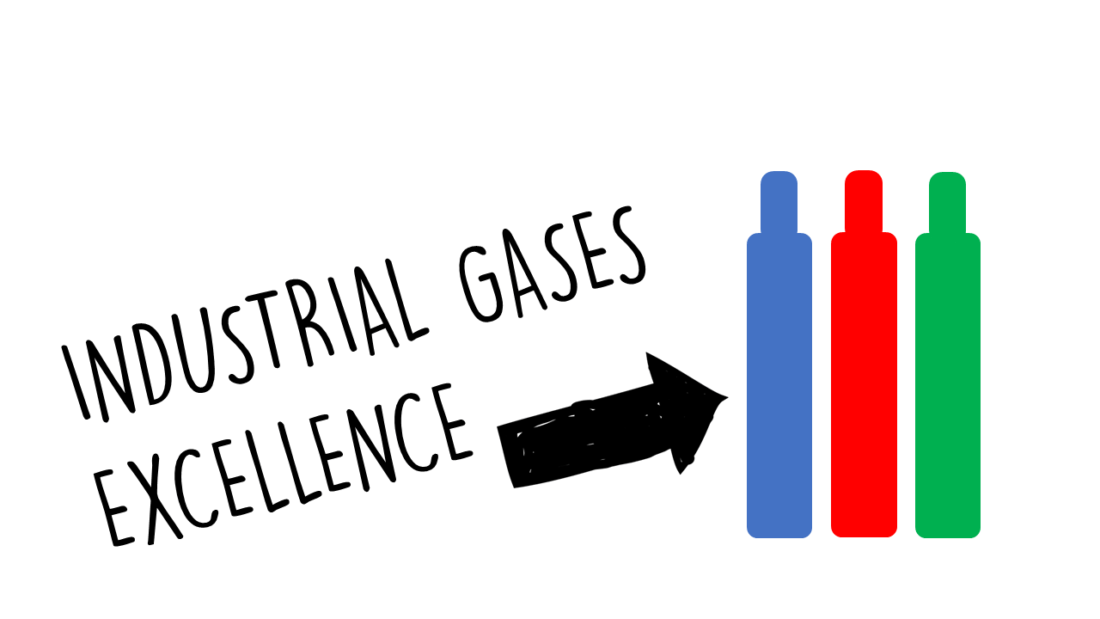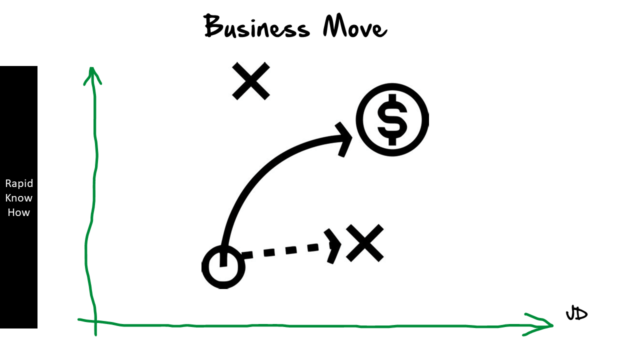Introduction
The industrial gas market is a crucial sector that provides essential gases to various industries for a wide range of applications. These gases play a vital role in processes such as manufacturing, healthcare, and energy production. Pricing strategies are of utmost importance for industrial gas companies as they directly impact profitability, customer acquisition and retention, and market share. In this article, we will delve into the industrial gas market, the significance of pricing strategies, factors affecting pricing, different pricing approaches, the role of competition and supply and demand, challenges and opportunities in pricing for different gases, the impact of technology on pricing, and best practices for successful pricing.
Understanding the Industrial Gas Market: An Overview
Industrial gases are gases that are produced and sold for industrial use. They are used in various industries such as manufacturing, healthcare, food and beverage, electronics, and energy production. These gases are typically produced through processes such as air separation, hydrogen production, and natural gas reforming. Some common types of industrial gases include oxygen, nitrogen, hydrogen, carbon dioxide, argon, and helium.
The industrial gas market is dominated by a few key players who have a significant presence globally. These companies have extensive production facilities and distribution networks to cater to the demand for industrial gases. Some of the major players in the industrial gas market include Linde plc, Air Liquide, Praxair Inc., Air Products and Chemicals Inc., and Taiyo Nippon Sanso Corporation.
The Importance of Pricing Strategies in the Industrial Gas Market
Pricing strategies play a crucial role in the success of industrial gas companies. The pricing decisions made by these companies directly impact their profitability. Setting the right price for their products is essential to ensure that they cover their costs and generate a reasonable profit margin. Pricing strategies also play a significant role in customer acquisition and retention. Competitive pricing can attract new customers, while value-based pricing can help retain existing customers. Additionally, pricing strategies are crucial in maintaining market share. By offering competitive prices, industrial gas companies can stay ahead of their competitors and retain their position in the market.
Factors Affecting Pricing in the Industrial Gas Market
Several factors influence pricing decisions in the industrial gas market. The cost of production is a significant factor that determines the pricing of industrial gases. The production process, including the cost of raw materials, energy, and labor, directly impacts the cost of production. Market demand also plays a crucial role in pricing decisions. When demand is high, companies can charge higher prices, whereas during periods of low demand, they may need to lower prices to stimulate sales. Competition is another factor that affects pricing. The presence of multiple players in the market can lead to price wars and intense competition. Lastly, the regulatory environment can impact pricing decisions. Government regulations and policies related to pricing, taxes, and environmental standards can influence the pricing strategies of industrial gas companies.
Cost-Plus vs. Value-Based Pricing: Which is Better for Industrial Gas Companies?
Cost-plus pricing and value-based pricing are two common approaches used by industrial gas companies to determine their prices. Cost-plus pricing involves calculating the cost of production and adding a markup to determine the selling price. This approach ensures that the company covers its costs and generates a profit margin. On the other hand, value-based pricing focuses on the perceived value of the product to the customer. The price is set based on the benefits and value that the customer derives from using the product.
Both pricing strategies have their pros and cons. Cost-plus pricing provides a straightforward method for determining prices and ensures that costs are covered. However, it may not take into account the value that customers place on the product. Value-based pricing, on the other hand, allows companies to capture the value they provide to customers and potentially charge higher prices. However, it requires a deep understanding of customer needs and preferences and may be more challenging to implement.
When choosing a pricing strategy, industrial gas companies need to consider factors such as market demand, competition, and customer preferences. They should also evaluate their cost structure and determine if cost-plus pricing or value-based pricing aligns better with their business goals and objectives.
The Role of Competition in Pricing Strategies for Industrial Gas Companies
Competition plays a significant role in shaping pricing strategies for industrial gas companies. In a highly competitive market, companies may engage in price wars to gain market share. This can lead to a downward spiral in prices, impacting profitability. However, competing solely on price may not be sustainable in the long run. Companies need to differentiate themselves from their competitors and offer unique value propositions to customers.
One strategy for competing on price is to focus on cost optimization. By streamlining operations, improving efficiency, and reducing costs, companies can offer competitive prices while maintaining profitability. Another strategy is to compete on value. This involves offering additional services or benefits that differentiate the company from its competitors. For example, providing technical support, customized solutions, or superior customer service can justify higher prices and help retain customers.
The Impact of Supply and Demand on Industrial Gas Pricing
Supply and demand dynamics have a significant impact on pricing in the industrial gas market. When demand for industrial gases is high and supply is limited, companies can charge higher prices. Conversely, when demand is low and supply exceeds demand, companies may need to lower prices to stimulate sales. It is essential for industrial gas companies to closely monitor supply and demand trends and adjust their pricing strategies accordingly.
To manage supply and demand fluctuations, companies can implement strategies such as inventory management, production planning, and supply chain optimization. By maintaining adequate inventory levels and optimizing production schedules, companies can ensure a steady supply of gases to meet customer demand. Additionally, they can collaborate with customers to forecast demand accurately and plan production accordingly.
Pricing for Different Industrial Gas Products: Challenges and Opportunities
Pricing for different types of industrial gases presents unique challenges and opportunities. Some gases, such as oxygen and nitrogen, are widely used across various industries and have a relatively stable demand. Pricing for these gases may be more straightforward as companies can leverage economies of scale and cost efficiencies. However, competition may be intense, and companies need to differentiate themselves to maintain market share.
Other gases, such as specialty gases or rare gases like helium, present different challenges. These gases may have a limited supply and high demand, leading to higher prices. Companies need to carefully manage their pricing strategies for these gases to balance profitability and customer satisfaction. Additionally, there may be opportunities for pricing differentiation by offering unique services or applications for these specialty gases.
The Role of Technology in Pricing Strategies for Industrial Gas Companies
Technology plays a significant role in shaping pricing strategies for industrial gas companies. Advanced analytics and pricing software can help companies analyze market data, customer preferences, and competitive pricing to make informed pricing decisions. These tools can provide insights into price elasticity, demand patterns, and customer segmentation, enabling companies to optimize their pricing strategies.
Furthermore, technology can enable dynamic pricing, where prices are adjusted in real-time based on market conditions and customer behavior. This approach allows companies to capture the maximum value from each transaction and respond quickly to changes in supply and demand.
Balancing Profitability and Customer Satisfaction in Industrial Gas Pricing
Balancing profitability and customer satisfaction is crucial in pricing strategies for industrial gas companies. While it is essential to generate profits to sustain the business, it is equally important to meet customer expectations and provide value. Setting prices too high may lead to customer dissatisfaction and loss of market share, while setting prices too low may impact profitability.
To achieve this balance, companies need to understand their cost structure, market dynamics, and customer preferences. They should conduct regular pricing analyses to ensure that their prices are competitive and aligned with the value they provide to customers. Additionally, companies should focus on delivering exceptional customer service and building strong relationships with customers to enhance customer satisfaction and loyalty.
Best Practices for Successful Pricing in the Industrial Gas Market
Successful pricing in the industrial gas market requires a comprehensive approach that takes into account various factors. Some key best practices for successful pricing include:
1. Conducting regular pricing analyses: Companies should regularly analyze their pricing strategies, market trends, and competitive landscape to ensure that their prices are competitive and aligned with customer expectations.
2. Segmenting customers: Industrial gas companies should segment their customers based on factors such as industry, size, and usage patterns. This allows them to tailor their pricing strategies to different customer segments and provide customized solutions.
3. Leveraging technology: Companies should leverage advanced analytics and pricing software to gain insights into market dynamics, customer preferences, and competitive pricing. This enables them to make data-driven pricing decisions and optimize their pricing strategies.
4. Offering value-added services: Providing additional services or benefits can justify higher prices and differentiate the company from competitors. Companies should identify opportunities to offer value-added services such as technical support, training, or customized solutions.
5. Monitoring supply and demand: Industrial gas companies should closely monitor supply and demand trends to adjust their pricing strategies accordingly. By managing supply chain operations effectively, companies can ensure a steady supply of gases and optimize pricing.
Conclusion
In conclusion, pricing strategies play a crucial role in the success of industrial gas companies. The industrial gas market is a vital sector that provides essential gases to various industries. Pricing decisions directly impact profitability, customer acquisition and retention, and market share. Factors such as cost of production, market demand, competition, and regulatory environment influence pricing decisions. Industrial gas companies can choose between cost-plus pricing and value-based pricing approaches, depending on their business goals and customer preferences. Balancing profitability and customer satisfaction is essential, and companies should leverage technology and best practices to optimize their pricing strategies.




